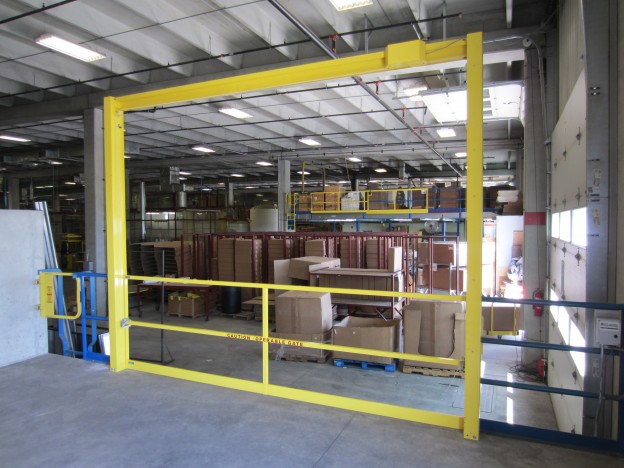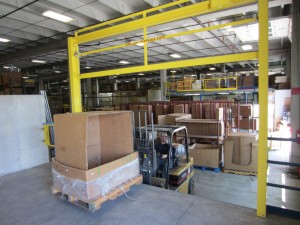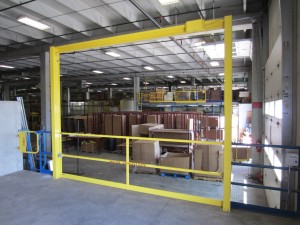By Brett @ A-Mezz
Let’s dive into a little workplace safety tangent. Earlier this month an article came out of Wyoming pointing that their state legislators may hike the workplace safety penalties for companies found to be in violation of the state’s Occupational Health and Safety Act.
Currently, according to an OSHA.gov publication, OSHA can assess a penalty of $1,500 to $7,000 for a ‘serious violation’. The OSHA definition of a serious violation is one where there is substantial probability that death or serious physical harm could result. This could be a situation that the employer was not even aware failed to meet federal safety standards. We come across this all the time when it comes to fall protection and machine guarding. If your roof hatch is open and employees are doing work in the vicinity, there is an opportunity for serious injury unless you use a roof hatch safety rail. Likewise, fixed ladders that do not have automatically closing ladder gates or offset orientations could also cause serious injury should a fall occur. Shop machines without proper guarding, and in some cases, without electrical interlocks, can also cause serious violations if your employees can gain access to movable parts without the machine shutting down.
OSHA also has a penalty for a “Willful Violation”. This they define as a violation that the employer intentionally and knowingly commits. The employer is aware that a hazardous condition exists, knows that the condition violates a standard or other obligation of the act, and makes no reasonable effort to eliminate it. OSHA can access penalties up to $70,000 for each violation. Knowing that areas lack proper fall protection but choosing not to address the hazard could easily put an employer into this category of violation. Should that violation result in the death of an employee the penalty can be increased up to $250,000 (or $500,000 if the employer is a corporation). Those fines are in addition to any legal amounts the injured or killed party may be awarded.
As Benjamin Franklin once put it, “An ounce of prevention is worth a pound of cure”. Proper safety equipment is MUCH less expensive than ignoring a safety issue and having a costly accident.



